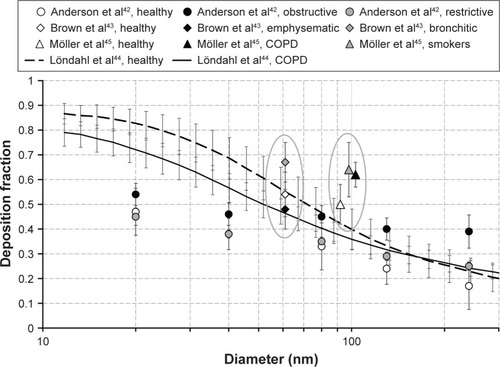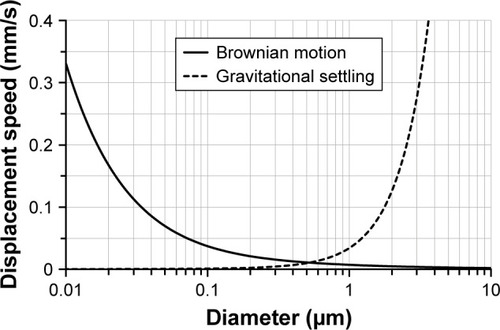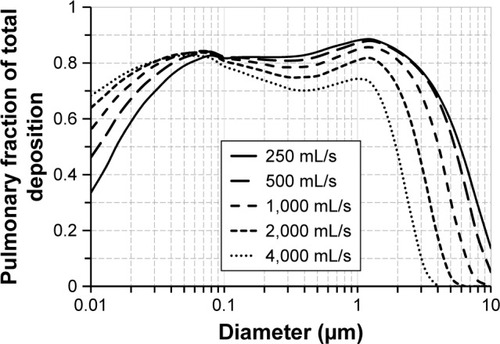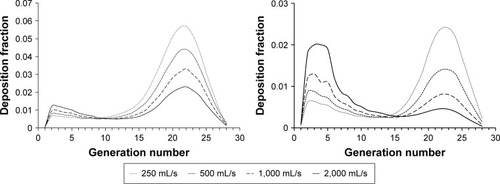Figures & data
Figure 1 Available experimental data for patients with COPD.Citation42–Citation45 The four studies are different with respect to aerosol type, breathing pattern, classification of disease, and experimental methodology. Ellipses are added for clarity (indicating data from Brown et alCitation43 and Möller et alCitation45).
Abbreviation: COPD, chronic obstructive pulmonary disease.

Figure 2 Comparison of gravitational settling velocity and root mean square Brownian displacement in 1 s.Citation71 The calculation is made for body temperature (37°C) with unit density spherical particles.
Abbreviation: s, second.

Figure 3 The fraction of particles deposited in the pulmonary region as calculated by the Multiple Path Particle Dosimetry model. The simulated breathing patterns correspond to those used in diagnostic procedures, with a 2,000 mL inhalation followed by a 10 s breath-hold.
Abbreviation: s, second.

Figure 4 Deposition fraction at different generations of the respiratory tract for 0.05 µm particles (left) and 1 µm particles (right) as calculated with the Multiple Path Particle Dosimetry model for a healthy adult during oral breathing without breath-hold.
Abbreviation: s, second.

Figure 5 Estimated half-life, t½, of inhaled particles during a breath-hold for airways with a radius of 200, 300, and 400 µm, respectively, which corresponds with the airspace sizes in the periphery of healthy lungs and of patients with mild pulmonary emphysema.
Abbreviation: s, second.

